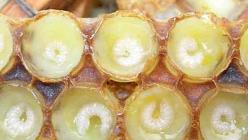▫ And a little more. Such a theme: Finnish war. Previously, they tried not to talk about it at all. Now there are many publications. And for the most part - bleakly there, in publications. But the distortion of history - is it really true to tell about losses, disastrous blunders in supply, command and control, propaganda and in general the `orientation` of this entire military campaign? Silence is a distortion. Although ... And here, too, there are two ways: you can laugh vilely at defeats, keeping silent about heroism. Or you can fall into pathos, convict of `defeatism` of those who realistically assess the scale and results ...
▫ You and I are talking about the same thing... It's just that your first comment was not very clear right off the bat, and so, our position is almost the same.
▫ Quite right: to see adequately. For example: here was Prince Alexander. He kicked the Scandinavians, it was the case. Then he stuffed the `order-bearers`. And besides, he led the Horde to Rus' and used their help in civil strife. By the way, a lot of people died in Rus' then, from these campaigns. It is also appropriate to give explanations of actions: the situation, the problems of choice ... Another example: the role of such and such an organization in the Great Patriotic War. And instead of `If not for us, then there would be no victory!` - to tell how it really happened. That there were those who were from their ranks, but fought. The number can be specified (so that there is no impression that the rest stood on the sidelines, and those figures did everything themselves). Marked in heroism. And there were those who hugged and drank vodka together with the military, not in our uniforms. Also indicate the number - to compare the scale of participation on our side - and on the enemy side. So as not to give the impression that they were standing on the sidelines. And the conclusion to draw: that's how they won. Together. This is our TOTAL victory. Not dependent on the cross, crescent and other things; from `Thank you`, `rakhmet`, `barkal` or `dyakuyu`. =================== You look, next time a young man or girl who saw a `judge` about how everything was `oh, bad-bad-bad!` - or about how everything was `oh, good, good, good!` - they could independently, with KNOWLEDGE of the matter and Luggage of truthful, adequate knowledge, smile, sorry: `This is a lie, guys. This is on purpose to distort our country, our history, our VALUES (disgrace, misrepresent, overpraise, stretch ... etc.). Isn't it adequate? I think it will be respectful and principled both for the country and for history. Well, the blanket is pulling - so, I repeat, the domestic ones are even worse than the Midwayers. Whatever they were and to what social or other `niche` they did not belong. Because they are nearby. Among us. Because they know: from adults and principled ones, you can rake and, so to speak, `respond for the bazaar` - and they climb to the children. Different ways. I am sure that stopping such people is both adequate and patriotic. Whoever they are and whatever they dress up and don't 'dress up'.

Once upon a time there were two girls-girlfriends in the world - a girl WINTER and a girl SUMMER. Every year they meet when the cold winter is replaced by a gentle and warm spring. In memory of people about their friendship, the girls make a multi-colored carpet. Among the many colors that girls work with, each of them has its own most beloved, most magical.
SUMMER has a yellow, warm sunbeam, and winter has blue or blue ice. With the help of these paints, they can turn each color either into a cold one, to freeze it, or into a warm one, to warm it up.
The girl WINTER lowers a small blue piece of ice into each color, and the color freezes, acquires a cold shade. And the girl LETO warms the colors with a warm yellow beam, turning them into warm ones. Warm colors are always compared with the sun and are called sunny, and cold colors are always compared with ice and are called cold.

Icebreaker Arctic .





Kamerova Valentina Mikhailovna

Main colors
Composite colors

Color circle
LOOK at the color wheel, And determine where are warm and where are cold colors?

warm colors
cold colors

But there is a dispute between the girlfriends. Girlfriends can’t decide how to call the green color - warm or cold.
Why do you think?
How can you get green?





Consider two photographs with landscapes.
Which of these landscapes is "warm" , what is "cold"? Why?

Artists in their paintings also use combinations of warm and cold colors.
Arkhip Kuindzhi "Elbrus in the evening".

Jan van Goyen "Landscape with Dunes".

Remember the fairy tale "Humpbacked Horse" and imagine the firebird's feather, which was left in Ivan's hands when it escaped
She is a wonderful bird. All from flame-fire. Wings gently lift The tail unfolds like a fan, Yakhont eyes burn - Amazing outfit. Darkness wins. The black cloud is the first enemy. And the feather of that wondrous bird In a moment, the desire will be fulfilled It will bring happiness to people.

Imagine a flaming feather glowing with shades of yellow-orange and red-orange. The brightness and richness of the warm colors of the magic feather is enhanced if it is placed against the background of a cold sky, i.e. surrounded by purple, blue, blue.
Warm and cold colors side by side help each other. sound brighter, louder.



Feather image of the Firebird
Choose the nature of the stroke to work with.
For example, for the background - a smear "rain" or "speck".
And for the image of the feather of the firebird - a smear "wave".


Our world has never been monochrome, it contains a huge number of tones and color transitions. Experts say that a person can distinguish about two percent of the shades of what is available to the eyes of birds and some insects. Instead of the outdated and imperfect system of decomposing white light into seven basic color bands, artists, designers and makeup artists have developed their own table of warm and cold colors, because for painting and coloring, the energy of perception, tone and shades have long become more important than color itself.
Why do we need a color chart
To be precise, the seven basic, fundamental colors in nature exist only in our perception for our vision. Coloring really proved that for the human eye there are only three basic color components - yellow, red and blue, plus an additional white. Any color or shade can be obtained from these three components, and the addition of more or less hot than the background color can make it warm or cold.
In the colorist, there is a clear division of colors into three groups:
- Warm tones include yellow, red and orange;
- The cold group includes blue, cyan, violet;
- Green can be equally attributed to both warm and cold at the same time, but, according to experts, green color is a relative of white, that is, completely balanced.
For your information! Such a division into warm and cold is rather arbitrary; it would be easier to use the concept of free energy. But the problem is that the shades of warm and cold content must be systematized and, most importantly, selected for compatibility, based on the perception of a person, and not on the basis of these devices.
A person does not have additional sense organs with which one could try the shade “on the tooth”, only the receptor sensation of heat and cold remains, which we are trying to use when classifying into cold and hot bases.
Using the cold and warm color chart
The practical application of gradation into cold and warm colors is based in part on human psychology based on several rules of mutual influence:
- The definition of "cold" or "warm" occurs only on the basis of one's own psychological experience and a person's stereotype. So, for example, white and blue are associated with ice and snow, so their combination can be considered cold;
- Contacting on the same color field of two zones of pronounced warm and cold colors is a mutual equilibrium influence. For example, when blue and red colors come into contact, the first becomes softer, warmer, the second becomes emotionally piercing and tougher;
- Mixing color bases with each other with the addition of white allows you to control the visual color temperature.
For your information! The table, using the last two points, tries to describe the mechanism of how to make the perception of a hue warmer or colder, since the associative method does not give a 100% result.
The same combination of white and blue different people can evoke completely different associations. For some it's cold blue ice and snow, for others it's hot blue skies around a white sun. Therefore, we switched from psychology to the temperature of the color matrix.
How to change color temperature
The easiest way to illustrate the effect of changing color temperature is with the three most important colors for us, yellow, green, and red.
For a warm yellow color, the temperature can only be increased by adding shades with a lower energy, for example, red, as in the table.

Warmer than basic yellows include, for example, honey yellow, dandelion or sunflower.


To transition to colder tones, add green or blue.

Red is energetically warmer than yellow, so controlling its temperature is more difficult. Energy gradation different shades red is perceived the most difficult.

To make the red color colder, you have to shift its background towards purple with the help of blue and gray.


Warming up red is much easier with the addition of yellow.

Green color changes in temperature saturation much easier, since it can be obtained by mixing two components with different temperatures - yellow and blue. The procedure for giving the necessary energy is actually reduced to enhancing one of the color components.
The theme of the lesson “Warm and cold colors” of the lesson: Objectives 1) Educational: to introduce the primary ideas about expressive means every kind of art; improve graphic skills when working with different materials; teach how to use cold and warm colors in working with watercolor (color overlay, color combinations). 2) Developing: to develop in children the perception of the features of the spring landscape through painting, poetry, music; develop the logical thinking of students (the ability to make comparisons, generalizations, conclusions); develop the creative imagination of students; development of visual-motor coordination ( psychological development); develop various methods of working with a brush, pencil, wax. 3) Educational: education of a sense of beauty in nature through painting, poetry, music; instilling in students the skills of careful handling of fire (fire safety). Equipment: a white sheet of paper (for watercolor), watercolor paints, a vessel for water, a simple pencil, a candle for drawing, a set of brushes, a cloth, a template for a linear drawing of a candle, a candle in a candlestick. Course of the lesson: 1.Organization of the class Checking the readiness of the class for the lesson. Nature is the source of human creativity. Here is what the great Russian composer Pyotr Ilyich Tchaikovsky wrote: “Even art cannot give those moments of aesthetic delight that nature gives.” Today, the image master will introduce you to various states of nature and color as a means of expressing mood, feelings, attitude to the world. 2) Riddle Guess the riddle and find out what season we're talking about today: If the snow melts everywhere, The day becomes longer, If everything is green And the stream is ringing in the fields, If the sun shines brighter, If the birds are not up to sleep If the wind has become warmer - So , came to us ... (spring) At all times, artists, poets, writers, composers sang in their works the beauty of this season. In nature, winter fights with spring, does not want to give up its rights; struggle between cold and heat. She comes with affection And with her fairy tale. He will wave a magic stick - In the forest, a snowdrop will bloom. Do you love fairy tales?
3) Fairy tale (comprehension of the emotional expressiveness of warm and cold colors) “Two girlfriends live in the world - the girl Snegurochka and the girl Spring. Every year they meet when a cold winter is replaced by a warm spring. Girls give people their colors as a keepsake. But among all the colors they have one favorite, the most magical. With the help of these paints, they can turn any color into either cold or warm. What magic paint does the Snow Maiden have? (blue) - cold. At Spring? (yellow) - warm 3) Work on the color chart What colors can we call warm? Cold? What do warm colors represent? (joy, fun, happiness). What about cold ones? (anxiety, mystery, sadness). Today we will draw a kind fire. Guess the riddle: Can melt, but not ice, Not a lantern, but gives light (candle) (Showing a drawing for drawing) What colors are used in the drawing? A candle is lit On what occasion are candles lit? ( New Year, birthday, divination, lighting) Sequence of execution of the drawing Sheet arrangement - vertical Sketch with a pencil (reception of work - a thin line) - a line of a horizontal and vertical surface. Drawing a candle in a candlestick according to a template. Work with paints from light to dark tones. a) candle (drawing with wax, yellow) b) flame (color overlay technique: yellow, red; wick - black) c) background images: vertical - blue; horizontally purple. Work with a wide brush d) image of light from a candle (circle - color overlay) During work, music by P.I. Tchaikovsky "The Seasons" The composer devoted his music to the seasons (Spring - winter) By the fireside - January by the fireplace. Maslenitsa - February. Song of the lark - March. Snowdrop - April. White Nights - May. 4. Lesson summary 1) Exhibition of students' work Who was better able to convey the image of a candle using cold and warm colors? 2) Evaluation of students' work and answers 4) Summarizing conversation What can be expressed in color? (feelings, mood, emotions, state of mind) What colors would you use warm or cold to convey your mood in the lesson? Why? Let the light from your candle give warmth, joy, good mood and warm when the soul is sad and cold.



